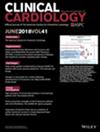Association Between Changes in Heart Rate and Adverse Events in Patients With Non-Valvular Atrial Fibrillation: A Post Hoc Analysis of the J-RHYTHM Registry
Abstract
Background
We previously reported that the heart rate (HR) at the time closest to an event or at the last visit during the follow-up period (HR-end) was more closely associated with adverse events (AEs) than baseline HR in patients with non-valvular atrial fibrillation (NVAF). However, it remains uncertain whether changes in HR during the follow-up period or absolute HR values would be more closely associated with AEs. Thus, we performed post hoc analyses using data from the J-RHYTHM Registry.
Methods
Of 7406 outpatients with NVAF from 158 institutions, 6886 (age, 69.8 ± 9.9 years; men, 70.8%), who had both baseline HR and HR-end data, were included. Patients were divided into five groups based on the changing patterns of HR quartiles from baseline (< 63, 63–70, 71–79, and ≥ 80 beats per minute) to the end of follow-up (no-change, down-to-the-lowest-quartile, down-to-the-2nd or -3rd-quartile, up-to-the-2nd or -3rd-quartile, and up-to-the-highest-quartile).
Results
Hazard ratios for AEs were significantly higher only in the up-to-highest-quartile group (2.89 [95% confidence interval, 1.71–4.90] for thromboembolism, 2.46 [1.53–3.95] for major hemorrhage, and 2.36 [1.51–3.70] for all-cause death) compared with the no-change group, after adjusting for confounding factors. Furthermore, in the no-change group, hazard ratios for AEs were significantly higher in the highest-to-highest-quartile subgroup (5.55 [1.49–20.77] for major hemorrhage and 3.60 [1.03–12.53] for all-cause death) compared with the 2nd-to-2nd-quartile subgroup.
Conclusions
Both excessive increases in HR and consistently high HR were independently associated with AEs in patients with NVAF. By contrast, modest decrease in HR during follow-up was associated with lower mortality. Accordingly, it is important to pay attention to changes in HR during follow-up for the management of patients with AF.
Clinical Trial Registration
The J-RHYTHM Registry is registered in the University Hospital Medicine Information Network (UMIN) Clinical Trials Registry (unique identifier: UMIN000001569) http://www.umin.ac.jp/ctr/.


 求助内容:
求助内容: 应助结果提醒方式:
应助结果提醒方式:


